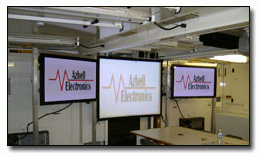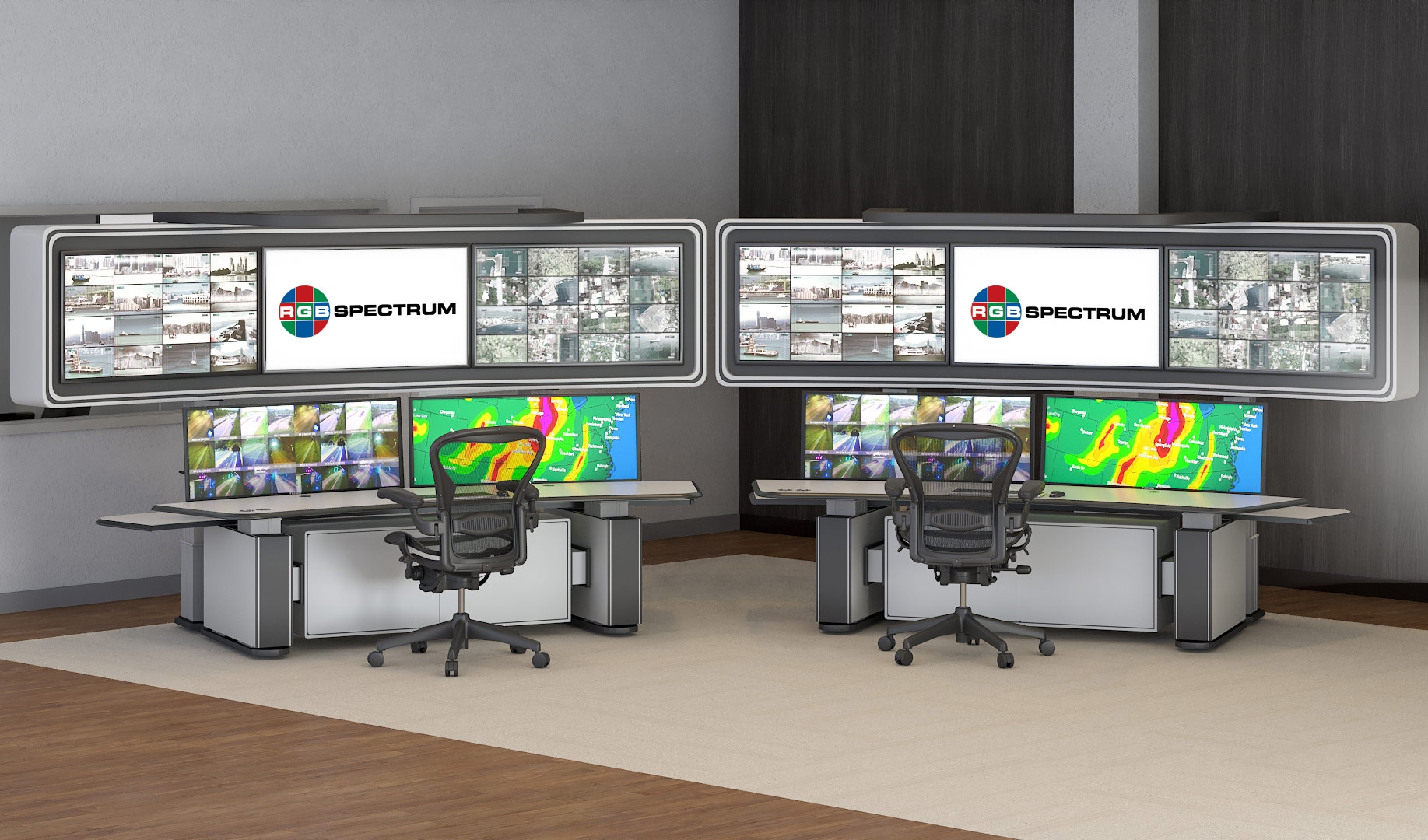Mobile Command Centers in Iraq Improve Tactical Situational Awareness
Modern warfare entails dynamic, split-second, tactical decision making, requiring battlefield commanders to have comprehensive situational awareness. Making this possible are tactical operations centers (TOCs), mobile, rapidly-deployable, forward command facilities where commanders and their staffs can assess battle conditions and developments and execute a wide range of strategic and tactical options. These battlefield TOCs must be able to acquire and present an extensive array of real-time data and audio/visual information to commanders.
The United States Army's 13th Sustainment Command (Expeditionary), a major subordinate command of the Army's III Corps, provides top-level logistics services for troops in the Baghdad region. The Command recently contracted Azbell Electronics, of Waco, Texas, to design and build a new generation TOC for their deployment to Iraq. Azbell Electronics is a major audio-visual technology integrator with expertise in the manufacture of mobile command centers.
According to Barry Crum, Vice President of Business Development for Azbell Electronics, "Our engineering team designed and fabricated a 20-foot-long command and control support shelter, especially for use in Iraq. Transported on a truck bed, it contains permanently rack- mounted gear for audio, video, teleconferencing, and voice and video communications. The shelter provides communications support for a multinational force up to the "three star" command level. The TOC can be assembled and operational in as little as 30 minutes."
The core of the new TOC is Azbell's Mobile Video Audio Display System (MVADS) which uses RGB Spectrum's QuadView and DualView multi-input, multi-image display processors. "Commanders making warfighting decisions require 100% accuracy, reliability, and speed. One of the key challenges was providing the capability to display an extensive range of live signals from many sources into one centralized area for the commander and staff. The QuadView and DualView processors integrate, manipulate, and display all of the various real time signals, including battlefield sensors, communications, weapons control, surveillance, reconnaissance, and network operations into one centralized display system. They are the highest performance and most reliable video windowing processors on the market and are the image processing standard for our mission critical TOC and command center installations", commented Crum.
The TOC is equipped with a total of up to twenty four QuadView and DualView processors each feeding a separate screen. The processors are fed a combination of computer and video signals. Video inputs include DVD players, VCRs, and surveillance/ reconnaissance video cameras from land vehicles and UAV unmanned aircraft. Computer sources include battlefield video teleconferencing systems, remote digital feeds from an assortment of battlefield sensors, maps, force tracking and resources databases, satellite down-linked surveillance, intelligence data, weapons control, and enemy target acquisition.
The processors consolidate all of these sources and output them real time to a centralized group of plasma and LCD displays and ceiling- mounted LCD projectors. The processors automatically scale all of the disparate inputs and output the visuals at the native resolution of the routed display devices. The visuals can be depicted on the displays according to the preference of each individual commander. The QuadView and DualView processors provide the capability to simultaneously display up to 64 windows across an array of display devices. TOC personnel control operation of the processors using AMX touch screen control panels. At the simple push of a button, operators select input sources, manipulate images, and choose from pre-set window display arrangements. Images can be any size, anywhere and also be zoomed and panned to emphasize a particular area of interest for commanders.
The mobile TOCs are robustly designed to withstand the rigors and harsh conditions of combat. Crum explained, the "MVADS-based command center is transported in a container via truck, train, ship, and/or helicopter. Shock and vibration are an engineering challenge that must be addressed. The equipment had to be installed in a configuration that would prevent damage while traveling over rough terrain". Azbell Electronics meticulously ruggedized all of the delicate electronic equipment and built shock-mounted enclosures for the gear.
The U.S. Army 13th Sustainment Command (Expeditionary), based at Fort Hood, Texas, is the logistical backbone to III Corps. For more information, visit www.hood.army.mil/13sce/index.htm.
Azbell Electronics, established in 1945 and headquartered in Waco, Texas, is an audio-video technology integrator serving commercial, broadcast, recreation, government, and military applications with expertise in custom-design and integration and production of mobile command centers for homeland security and the Department of Defense. Azbell Electronics MVAD Systems have been deployed in Iraq, Afghanistan, South Korea, Kosovo and also pressed into service in 2005 for the disaster recovery effort following Hurricane Katrina. For more information, call (254) 285-6720 or visit them online at www.azbellelectronics.com.
RGB Spectrum is a leading designer and manufacturer of mission-critical, real-time audio-visual solutions for a civilian, government, and military client base. The company offers integrated hardware, software, and control systems to satisfy the most demanding requirements. Since 1987, RGB Spectrum has been dedicated to helping its customers achieve Better Decisions. Faster.™


